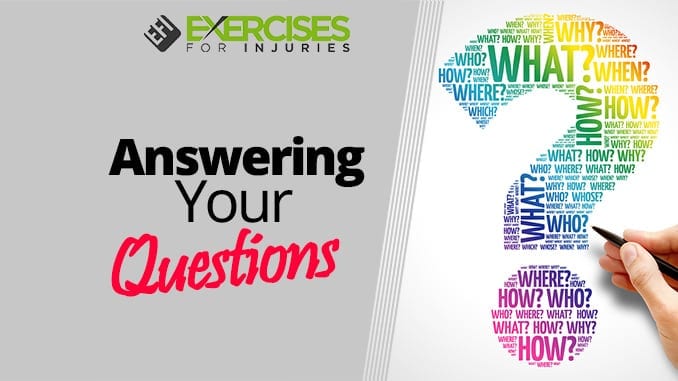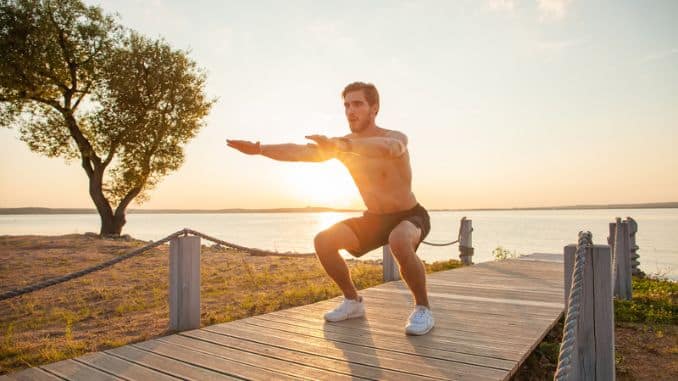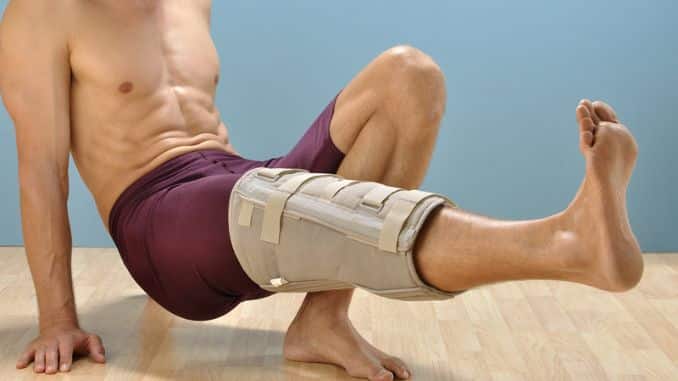
Of late, I have had a lot of great questions on EFI. I am answering your questions, and I thought it would be best. So here you go.
Pain when I do Your Recommended Lats Stretches
This is a question that came from the Upper Lats Stretches post.
Rick,
When doing the first two stretches and only when bending to the left I feel an intense pulling pain from my scapula all the way down to my hip on the right side of my body. The pain in more intense closer to the hip than the shoulder. Should I continue with this stretch or will this continue to aggregate a couple areas I already have trouble with?
Thank you,
LaDonna Davies
Hey LaDonna,
Thank you for the questions.
If you feel intense pain, I recommend discontinuing the exercise or making sure you are doing the exercise correctly.
Please watch the video again and make sure you follow the instructions that I mention.
One common mistake I find people make is they do too intense of a stretch. I recommend side bending from the thoracic spine to a point where you feel slightly stretched.
This is not your end range of motion but the point where your muscle is lengthened, and you feel a stretch.
I hope that helps.
What to Do About an Inner Quad Tear and Squatting?
I had a inner quad tear about a 18 months ago, and although is it a lot better now I still feel uncomfortable squatting, Which of your excercise programs should I purchase? My Ankle’s Pronate, when I hurt my knee the kneecap would click evertime I took a step especially going downstairs, this has now stopped for the most part. But Squatting still makes me nervous. Mind you I learned to do Clean & Jerk, Snatch and had no trouble with 150lb+, while with a simple 45lb bar back squat I feel uncomfortable.
I am not sure what an “inner quad tear” is.
It could be a vast medialis or adductor longus tear.
When it comes to a tear, I am not sure of the severity of it as well. Did you need surgery? Did you miss any training? What could you do or not do after it happened? etc.
When it comes to the Clean & Jerk and back squat: The C&J has more of a focus as a dominant hip exercise than the squat. Plus, the exercise is more dynamic, so you move through the movements quicker than you do with a back squat.
I would recommend working on improving tissue quality to start. Take the time to find the stretches that target your injured area and the foam rolling that targets these areas. Invest the time to fix this area.
Focus on dominant hip exercises now and work on technique and low load quad dominant exercises.
Since you have injured the area around your knee, a dynamic warm-up in this area before your leg-focused workout is even more important.
Regarding which program to get, I will wait until Fix My Knee Pain is released. It will be coming out in March.
~ Rick
What About Knee Braces for Squatting?
What about using a knee brace for 90 degree squats for relatively light weight–15-20 reps?
Olaf
Olaf,
I am not sure what kind of knee brace you are referring to. There are numerous types out there, and the second question I would ask is why you wear them.
You can wear a patellofemoral pain syndrome type brace to help with patellar tracking and to provide proprioceptive feedback on where the knee is within space.
Also, you can wear more of a collateral ligament brace to help provide stability to the knee side to side (front plane).
You can wear a cruciate ligament brace to improve stability in the sagittal plane and protect the ligament.
There is more we could talk about.
My take on braces is a temporary solution to help with recovery or for a max or heavy lifting situation. Still, for every day, every workout, forever solution, I would not advise it.
~ Rick
What is the Best Trunk Position to Decrease the Stress on the ACL?
This question came from the knee pain research review that I did.
This article also states “Squatting and lunging with a forward trunk tilt tend to decrease ACL loading, likely due to increased hamstrings activity.”
I wonder what the approximate degree of “trunk tilt” may be used to be effective in decreasing ACL Loading… ?
Hollis
Hollis,
Excellent question.
Now, if you like all this research review stuff, every day, I put up new research on injuries and pain on Exercises For Injuries Facebook Fan Page.
This article is amazing.
I read through the article, and on page 214, they talk about the answer.
They looked at a range of 10 to 15 degrees versus 30 to 40 degrees. They found 30 degrees ideal for high recruitment of the hamstring and minimizing ACL loading. As trunkload was increased, there was an increase in hamstring activity and a decrease in quadriceps activity. This applies to the bilateral squat.
Let’s look at the single-leg squat. A forward trunk position of 30 to 40 degrees, compared to a 10 to 15-degree angle position, had “resulted in a 24% decrease in ACL tensile force and a 16% decrease in ACL strain, which was suggested to be primarily due to a 35% increase in hamstrings force” (Escamilla 2012).
Very cool stuff.
Thank you to everyone that asked a question on the blog.
I am sorry if I was not able to answer your question.
Rick Kaselj, MS
A few reminders.
Dan John Seminar
Early registration for the Dan John seminar ends this Friday. After Friday, it goes up another $50. You can get details here.
This Month’s Injury of the Month
Watch for the IOTM, which will be coming out later this week. You picked it, and it is on Thoracic Outlet Syndrome.



